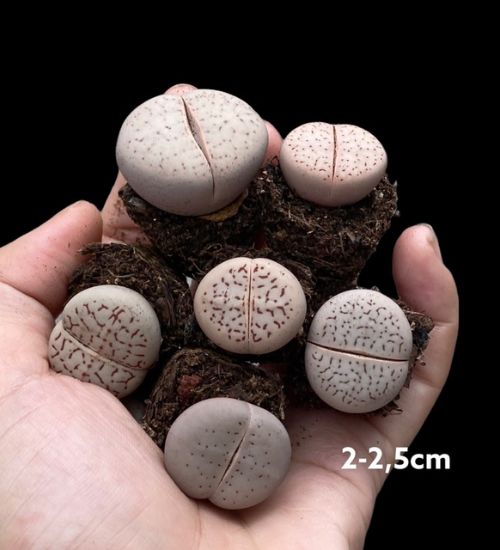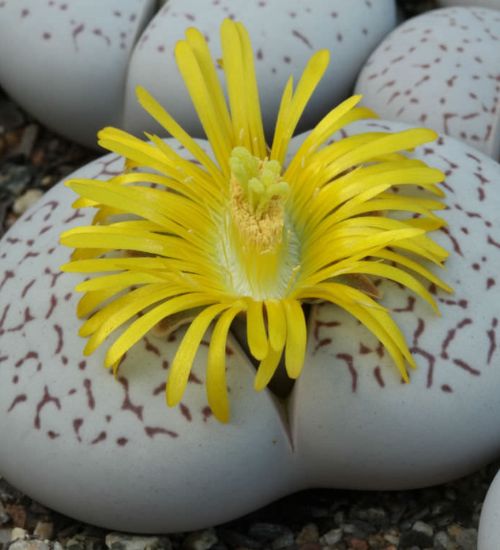Sun: Bright indoor light
Water: Below average watering needs for a succulent
Temperature: Zone 9a from 20° F to 25° F (-6.7 ° C to -3.9° C) to Zone 11b from 45° F to 50° F (7.2° C to 10° C)
Winter Survival: Not cold hardy
Propagation: seeds, division
Flower: rarely, In the Spring
Flower Type: Yellow
Toxic: Generally non-toxic to humans and animals
Dormant: winter
Space Requirement: Indoors
Common Problems: pests
Where to buy Dinteranthus vanzylii?
Basc Care for Dinteranthus vanzylii
Watering
Watering for Dinteranthus vanzylii is a simple task. It requires Below average watering needs for a succulent.
What you need to remember is that this type of succulents needs to be watered for every 2 weeks
Fertilizing
Only feed this succulent during its active growing seasons which means winter. Use the right fertilizer applied in the right amounts. Applying half-strength balanced fertilizer every month or so is recommended for optimal results.
Do not fertilize during winter as the plant is dormant.
Sun & Location Requirements for "Stone plant, Green stone plant, Living stone."
Succulents need plenty of bright, indirect light. Your Dinteranthus vanzylii is no exception! In order to thrive, "Stone plant, Green stone plant, Living stone." needs to be in a spot that gets direct sunlight for at least part of the day. If you don't have access to natural sunlight indoors, consider investing in an LED grow-light or other artificial lights to mimic sunlight.
Dinteranthus vanzylii is not cold hardy and does not survive in freezing conditions. However, there are certain strategies that can be used to help the plant thrive despite the chill of winter. Proper drainage and insulation are essential for succulent X during periods of extreme cold. Placing a layer of mulch or gravel on the soil around the plant can also help keep it warm.
Any succulents in the group will only need minimal space to grow. You can place your pot at your table or window. Outdoors is also a nice idea to put your pot.
Dinteranthus vanzylii also benefits from some indirect light throughout the day as well, so make sure you give it enough space to soak up light without becoming too exposed to heat.
Propagation
Dinteranthus vanzylii can be propagated from seeds. Signs of a good seed is one that is plump, dark in color and slightly sticky. To propagate X from seed, one must prepare a soil mixture of well-draining potting mix, sow the seeds evenly and lightly press them into the surface. Lastly, gently water the soil using a spray bottle and place the container in bright but indirect light.
Toxicity

Dinteranthus vanzylii is not known to pose any significant health risks, as it is not considered to be toxic. However, it is best to keep the plant away from young children and pets, as they may ingest some of the parts of this plant that could contain toxins which can cause mild skin irritation.
Pests and Diseases
Dinteranthus vanzylii can be affected common pests and diseases like most of the other succulents such as mealybugs and scale insects.
If you do spot any of pest signs, you can treat your succulent using below methods.
- Mealybugs: quarantine, clean infected plants, soapy water.
- Scale insects: quarantine, clean infected plants, soapy water.
Besides that, to prevent serious health issues from happening, keep your succulent in a well-ventilated area and check it regularly for any signs of pests or health problems.


